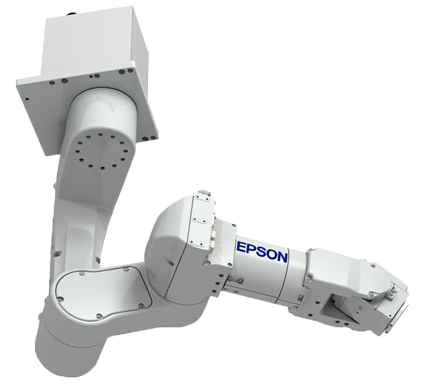6 AXIS ROBOT

Mass
production shifted into high gear with the introduction of
the traditional industrial robotic arm during the last half
of last century. Industrial robots are complex machines that
are programmed to perform a series of complex and precise
tasks without continual direct human worker involvement. The
computer embedded within the robot can be reprogrammed to
perform different tasks, but such changes are expensive,
requiring the expertise of a highly educated robot programmer
or robotics engineer.
ARTICULATED ROBOT
Traditional robots are commonly implemented to perform
high volume, repetitive task that require precision and
endurance well beyond a human worker’s ability. The
industries where industrial robots are implemented include
manufacturing, automobile production, packaging, electronics,
pharmaceuticals, and transportation.
 ROBOT
SAFETY
ROBOT
SAFETY
The most common tasks robots have been used for, are
those that are dangerous to humans, are too large, or too
small for humans, are in extreme environments, or are highly
repetitious. Adding to the dangerous environment, traditional
industrial robots are themselves dangerous to human workers
because of their power, speed, and inability to accommodate
changes in their working environment.
For worker safety, traditional industrial robots are always
accompanied by a complex series of safety rated sensors and
controllers designed to reliably stop all robot motion when a
person or object enters their working space. Physical
guarding and or light curtains may also be employed.
HTE Automation supplies industrial robots and engineering
services for their optimization to manufacturers in
Kansas, Missouri, and Illinois.

 Mass
production shifted into high gear with the introduction of
the traditional industrial robotic arm during the last half
of last century. Industrial robots are complex machines that
are programmed to perform a series of complex and precise
tasks without continual direct human worker involvement. The
computer embedded within the robot can be reprogrammed to
perform different tasks, but such changes are expensive,
requiring the expertise of a highly educated robot programmer
or robotics engineer.
Mass
production shifted into high gear with the introduction of
the traditional industrial robotic arm during the last half
of last century. Industrial robots are complex machines that
are programmed to perform a series of complex and precise
tasks without continual direct human worker involvement. The
computer embedded within the robot can be reprogrammed to
perform different tasks, but such changes are expensive,
requiring the expertise of a highly educated robot programmer
or robotics engineer. ROBOT
SAFETY
ROBOT
SAFETY